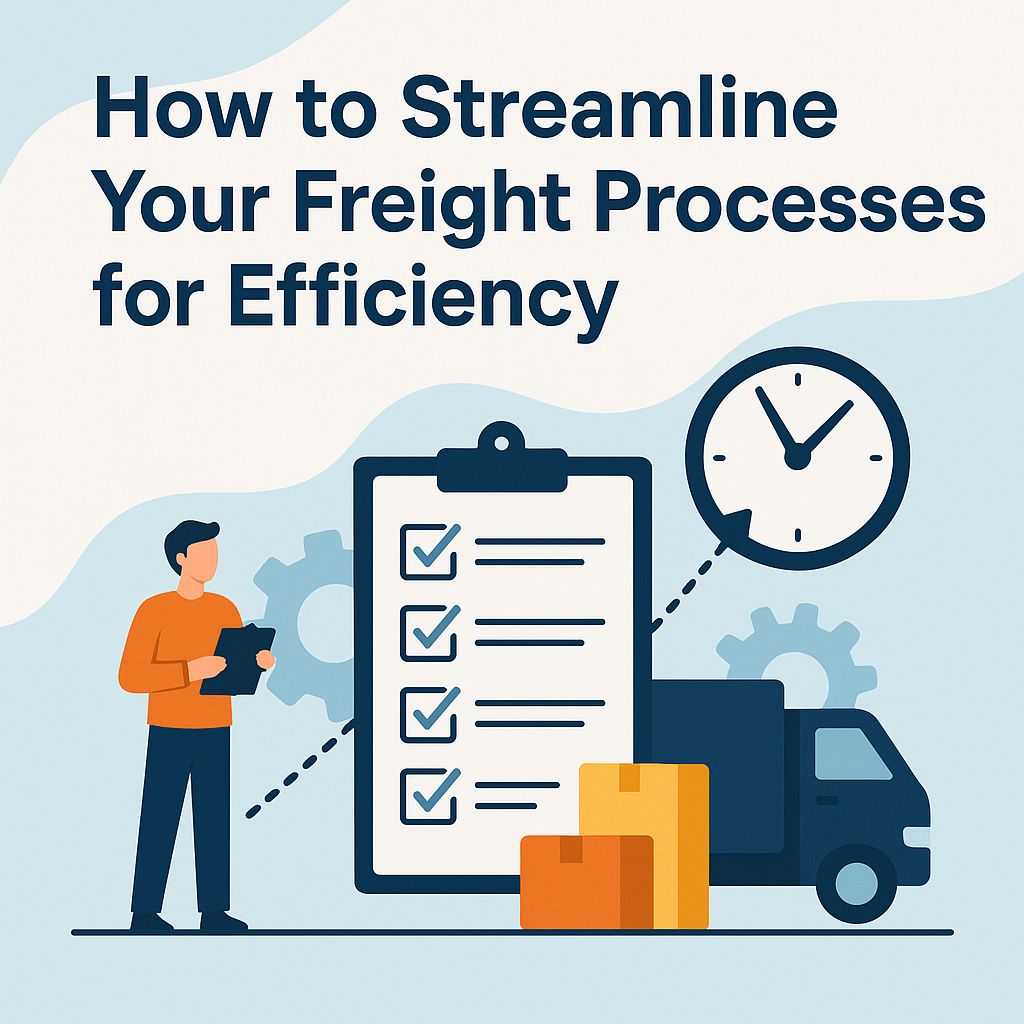
In today’s fast-paced world, businesses are constantly striving to increase operational efficiency, reduce costs, and improve service delivery. One area where these goals can be particularly impactful is freight management.
Streamlining your freight processes for efficiency not only helps reduce expenses but also enhances customer satisfaction by ensuring the timely and safe delivery of goods. For freight people managing these operations, leveraging effective strategies can make a significant difference.
This comprehensive guide will explore how to streamline your freight processes, break down key tactics, and explain the importance of optimising every stage of your freight logistics. Whether you are a business owner, logistics manager, or freight professional, these steps will help you improve the efficiency of your freight processes.
Let's Get Straight To The Point
To streamline your freight processes for efficiency, focus on five key strategies:
Centralise Freight Management: Use centralised systems (like Freight Management Software) to improve data transparency, coordination, and cost savings.
Automate Freight Processes: Automate order processing, invoicing, routing, and tracking to reduce errors, save time, and cut costs.
Optimise Routes and Schedules: Utilise real-time data, consolidate shipments, and explore alternative transport methods to minimise delays and reduce fuel costs.
Leverage a Freight Solutions Company: Partner with a freight solutions provider for expert guidance, advanced technology, and scalable solutions to enhance logistics efficiency.
Measure and Continuously Improve: Track performance through key metrics (e.g., on-time delivery, shipping cost per unit) and continuously refine processes for ongoing improvement.
By centralising operations, automating tasks, optimising routes, partnering with experts, and monitoring performance, businesses can cut costs, improve delivery times, and boost customer satisfaction. These strategies will keep your freight operations agile, cost-effective, and competitive in the global marketplace.
Freight Efficiency: Why It Matters
Before diving into how to streamline your freight processes, it’s essential to understand the importance of freight efficiency. Efficient freight processes translate into reduced shipping costs, shorter transit times, and a lower environmental impact. For freight people, it also means less time spent managing manual processes and more time focusing on strategic decision-making.
Benefits Of Streamlining Freight Processes
Cost Reduction: Streamlined processes help eliminate unnecessary expenses, such as delays, additional handling, and excessive paperwork.
Time Savings: Improved efficiency leads to quicker decision-making, faster shipments, and reduced transit times.
Customer Satisfaction: Reliable and timely deliveries boost customer trust and improve overall satisfaction.
Environmental Impact: More efficient processes reduce fuel consumption and emissions, benefiting sustainability efforts.
Now, let’s explore how to streamline your freight processes in a few key steps.
Step 1: Centralise Your Freight Management
The Importance Of Centralised Freight Management

Centralising your freight management is one of the first and most effective steps toward improving efficiency. By consolidating all aspects of freight into one central system, you ensure that all stakeholders can access the same information at any given moment, eliminating confusion and delays.
Key Benefits Of Centralising Freight Management
Data Transparency: All data related to freight operations, including shipping schedules, inventory levels, and customer orders, are easily accessible in real-time.
Better Coordination: When you centralise freight processes, you can coordinate more effectively between warehouses, transportation carriers, and customers.
Cost Savings: Centralisation helps identify inefficiencies and potential cost-saving opportunities, such as consolidating shipments or choosing better shipping routes.
Tools For Centralised Freight Management
To centralise your freight management effectively, you can rely on freight management software (FMS) or transportation management systems (TMS). These tools integrate all data related to shipping and logistics into a single platform, allowing you to automate tasks, track shipments, and analyse performance.
Step 2: Automate Freight Processes
Why Automation Is Key For Freight Efficiency
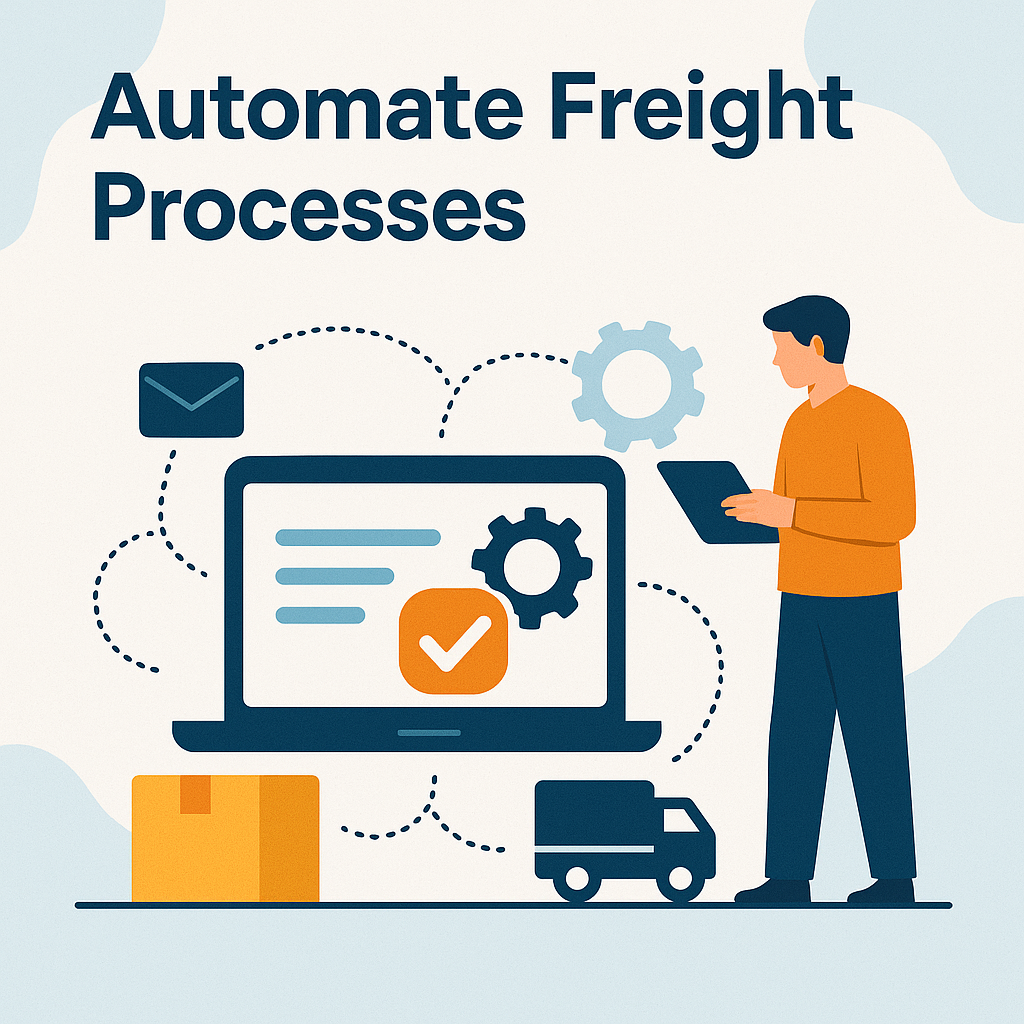
Automation is crucial for increasing freight process efficiency. Manual processes are often slow, error-prone, and costly. By automating certain aspects of freight management, you can significantly reduce the potential for mistakes, speed up operations, and improve the accuracy of your freight-related data.
Areas To Automate In Freight Management
Order Processing: Automatically input and process orders to reduce manual entry and minimise the chances of errors.
Invoice Management: Automate invoicing processes to reduce administrative overhead and ensure timely billing.
Routing and Scheduling: Use automated systems to choose the best shipping routes based on real-time data, reducing transit times and fuel costs.
Tracking and Notifications: Implement automated tracking systems that notify stakeholders of shipment statuses, reducing the need for manual checks.
Benefits Of Automation
Error Reduction: Automation reduces human errors, such as misentered data or missed shipments.
Time Savings: Automated processes reduce manual labour, freeing up resources for more value-added activities.
Cost Efficiency: By minimising mistakes and optimising operations, automation leads to lower operational costs.
Step 3: Optimise Freight Routes and Schedules
Freight Route Optimisation: A Crucial Efficiency Strategy
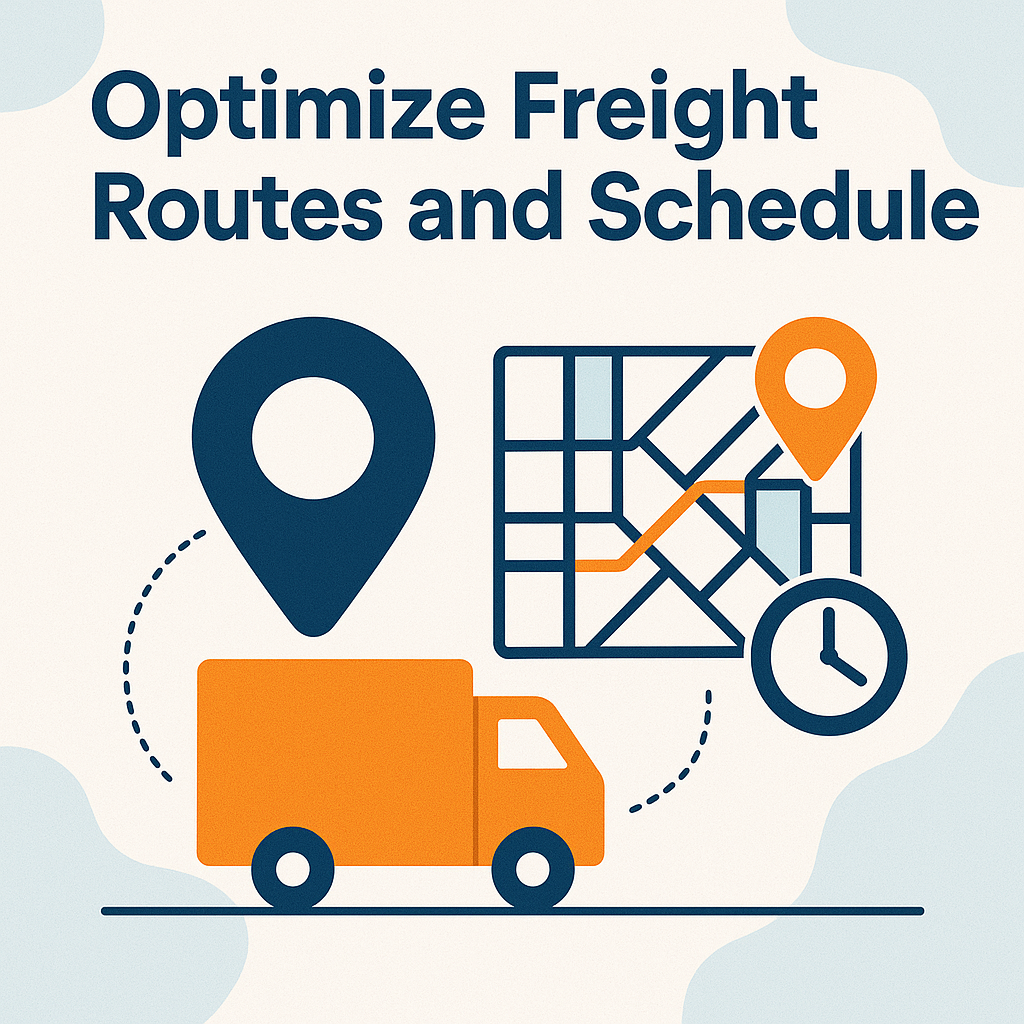
Optimising your freight routes and schedules can have a significant impact on both cost and time efficiency. Proper route planning helps reduce fuel consumption, minimise delays, and ensure that goods are delivered on time.
Key Strategies For Route Optimisation
Use Real-Time Data: Leverage GPS and traffic data to identify the most efficient routes in real-time.
Consolidate Shipments: Combine smaller shipments going to the same area to maximise load capacity and reduce the number of trips.
Consider Alternative Modes of Transport: Depending on the type of freight, consider alternative shipping methods like rail or sea transport to save on costs and time.
How Freight Scheduling Enhances Efficiency
Scheduling freight shipments effectively can further enhance efficiency. By anticipating demand and working with transportation providers to set fixed schedules, businesses can reduce waiting times, improve load management, and prevent bottlenecks in the shipping process.
Step 4: Leverage a Freight Solutions Company
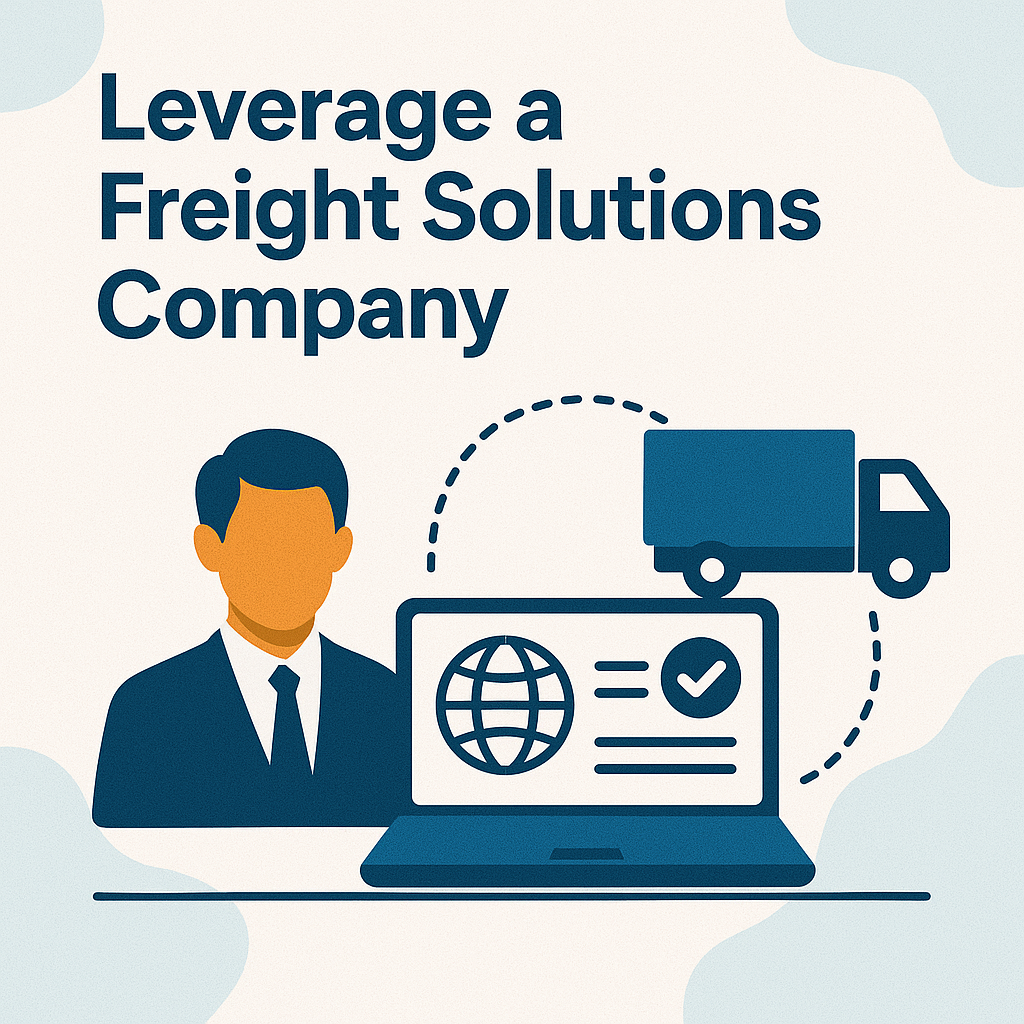
How A Freight Solutions Company Can Streamline Your Operations
For businesses looking to optimise their freight processes, partnering with a freight solutions company is an excellent strategy. A professional freight solutions provider brings expertise and advanced tools to the table, enabling businesses to streamline logistics operations and enhance overall supply chain efficiency.
Benefits Of Working With A Freight Solutions Company
Expertise: A freight solutions company has deep knowledge of industry best practices, regulations, and market trends. This expertise can help businesses navigate the complexities of freight management more effectively.
Access to Technology: Freight solutions providers often have access to advanced technologies such as transportation management systems (TMS) and freight tracking tools that can optimise operations.
Scalability: These companies can scale your freight operations as your business grows, ensuring that your logistics needs are always met without compromising efficiency.
How To Choose The Right Freight Solutions Provider
When selecting a freight solutions company, consider factors such as:
Reputation and Track Record: Choose a provider with a proven track record of success in streamlining freight processes.
Technology Capabilities: Ensure that the company has access to the latest technology to support automation, tracking, and reporting.
Customisation: Opt for a provider that can tailor its services to meet your specific business needs, ensuring maximum efficiency.
Step 5: Measure Performance and Continuously Improve
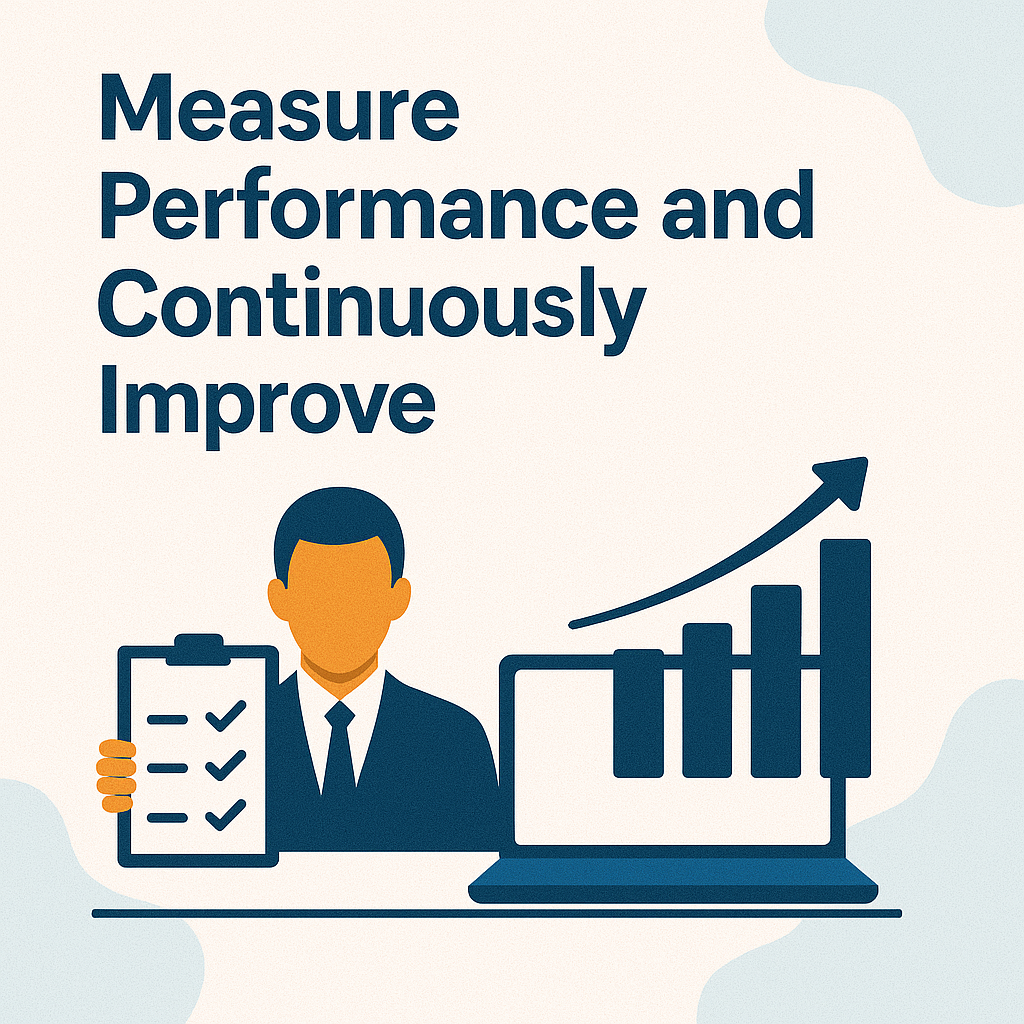
The Importance Of Performance Metrics In Freight Management
Measuring the performance of your freight operations is essential for ensuring that your processes remain efficient. By tracking key performance indicators (KPIs), you can pinpoint areas for improvement and make data-driven decisions to optimise further.
Key Freight KPIs To Track
On-Time Delivery: Track the percentage of deliveries made on time to identify potential delays in your freight processes.
Shipping Cost per Unit: Analyse the cost of shipping per unit to identify opportunities for cost reduction.
Freight Claims: Monitor the number of freight claims related to damaged or lost items, as this can point to inefficiencies in your logistics operations.
Fuel Consumption: Track fuel usage to identify areas where route optimisation or vehicle maintenance could reduce costs.
Continuous Improvement In Freight Operations
After measuring performance, it's important to implement a continuous improvement strategy. Use the insights gathered from your KPIs to adjust your processes, whether it’s renegotiating contracts with carriers, optimising routes, or investing in new technology. For freight people, this continuous loop of assessment and refinement ensures that efficiency remains a top priority.
Conclusion
Streamlining your freight processes for efficiency requires a combination of effective strategies, including centralising your management systems, automating key operations, optimising routes, partnering with a freight solutions provider, and continuously measuring performance. By implementing these steps, businesses can reduce costs, improve delivery times, and enhance customer satisfaction.
For freight people, focusing on these areas not only improves operational efficiency but also positions your business for long-term success in an increasingly competitive global marketplace. The right combination of tools, technology, and expert partnerships can make all the difference in optimising your freight processes.
By taking the time to evaluate and refine your freight operations, you ensure that your business remains agile, responsive, and cost-effective, all while providing the best possible service to your customers.
FAQs
How Can Centralising Freight Management Improve Efficiency?
Centralising freight management means consolidating all freight-related data and operations into a single platform, making it easier to track shipments, manage inventory, and coordinate with carriers. This improves transparency, reduces miscommunication, and helps identify inefficiencies, ultimately leading to cost savings and better decision-making.
Why Is Route Optimisation Important For Freight Efficiency?
Optimising freight routes helps reduce fuel consumption, minimise delays, and ensure on-time deliveries. By using real-time data to choose the best routes, consolidating shipments, and considering alternative transportation methods (like rail or sea), businesses can save both time and money.
How Can A Freight Solutions Company Help Streamline Operations?
A freight solutions company brings expertise, advanced technology, and customised services to help streamline logistics operations. They can assist with route planning, freight tracking, regulatory compliance, and technology integration, ultimately leading to more efficient and cost-effective freight processes.
How Can I Continuously Improve My Freight Processes?
Continuous improvement can be achieved by regularly analysing your performance metrics (KPIs), identifying inefficiencies, and making data-driven adjustments. This could involve renegotiating contracts with carriers, optimising routes, or investing in new technologies to keep improving operational efficiency.
Is It Expensive To Automate And Centralise Freight Management?
The initial investment in freight management software (FMS), transportation management systems (TMS), and automation tools can seem high. However, the long-term benefits, including reduced operational costs, improved accuracy, and time savings, often make the investment worthwhile. Additionally, these systems can scale with your business, providing more value as your operations grow.

